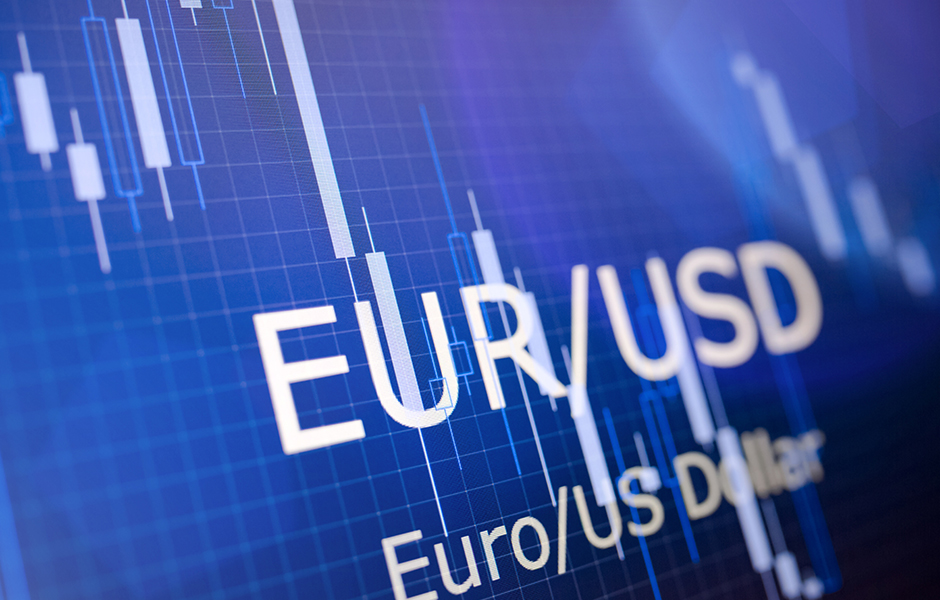EURO HITTING 17MONTH LOW AS USD FIRMED AGAINST MOST CURRENCIES

The euro weakened to $1.125, moving towards a recent 17-month low hit at the end of November, as investors turned to the US dollar following the Fed's policy decision, while awaiting the outcome of the ECB's monetary policy meeting due Thursday. The US central bank announced it would speed up its tapering of bond purchases, putting it on track to conclude it in March 2022 and paving the way for three interest rate hikes by the end of next year. Meanwhile, policymakers in the Euro Area are due to decide on the future of the bond-buying program amid concerns over the region's slowing economic growth as the region struggles with surging energy prices and new COVID restrictions.
The British pound was slightly up at $1.325 on Thursday, as investors await the outcome of the Bank of England's policy meeting later today, with policymakers set to opt for caution due to the imposition of tougher restrictions against COVID-19 in England amid the rapid spread of the Omicron variant. Still, they should voice concerns over growing inflationary pressure. Economic data on Wednesday showed British consumer price inflation rose more than expected to 5.1% in November, the highest since September 2011, and producer prices jumped 9.1%, the most since September 2008.
The Australian dollar firmed up above 0.715 against the US dollar on Thursday, buoyed by strong jobs data which raised the likelihood that the central bank will wind down its pandemic-era stimulus early next year. The Reserve Bank of Australia is considering three options for its quantitative easing program ahead of its formal review next year, including ending its bond purchases as soon as February, governor Lowe said in a speech. He also reiterated that the central bank would not increase the cash rate until actual inflation was sustainably in the 2%-3% target range.
The New Zealand dollar remained below 0.68 against the US dollar on Thursday, hovering near 13-month lows as a milder than expected economic contraction failed to prop up the currency. New Zealand’s economy shrank 3.7% in the third quarter, well below market expectations for a 4.5% contraction and central bank projection for a 7% decline. However, the Kiwi gained footing in the previous session after the Federal Reserve’s taper announcement signaled confidence in the economic recovery, sparking the market’s risk appetite. Meanwhile, the Reserve Bank of New Zealand raised the official cash rate by 25 basis points to 0.75% in its last meeting, in line with expectations but fell short of market speculations for a more aggressive 50 bps hike that analysts believed would be more supportive of the currency.
The Japanese yen was little changed around 113.68 per US dollar on Wednesday, after Bank of Japan Haruhiko Kuroda said that consumer inflation may approach the 2% target due to rising raw material costs, acknowledging that upward price pressures will continue to broaden. Mr. Kuroda however stated that the central bank would maintain its ultra-loose monetary policy to support higher wages and a steady economic recovery, ahead of its scheduled meeting later this week. The BOJ is also expected to consider whether to scale back pandemic-related emergency funding programs.
The offshore yuan was little changed around 6.37 per US dollar on Wednesday, after the People’s Bank of China injected 500 billion yuan into the financial system through its medium-term lending facility, but left the interest rate unchanged for the 20th straight month at 2.95%. The MLF injection coincided with the implementation of a previously announced cut to banks’ reserve requirement ratio, which unleashed 1.2 trillion yuan worth of long-term funds.
The Canadian dollar traded around 1.29 in mid-December, not far from a 16-week low of 1.2948 hit on August 20th, amid lower oil prices, while the Fed avoided any drastic changes to its monetary policy. The US monetary authority, as expected, announced it will speed up the end of its pandemic-era bond purchases and paved the way for three interest rate hikes by the end of 2022, voicing concerns over persistently high inflation against a backdrop of a steady recovery in the labor market.


